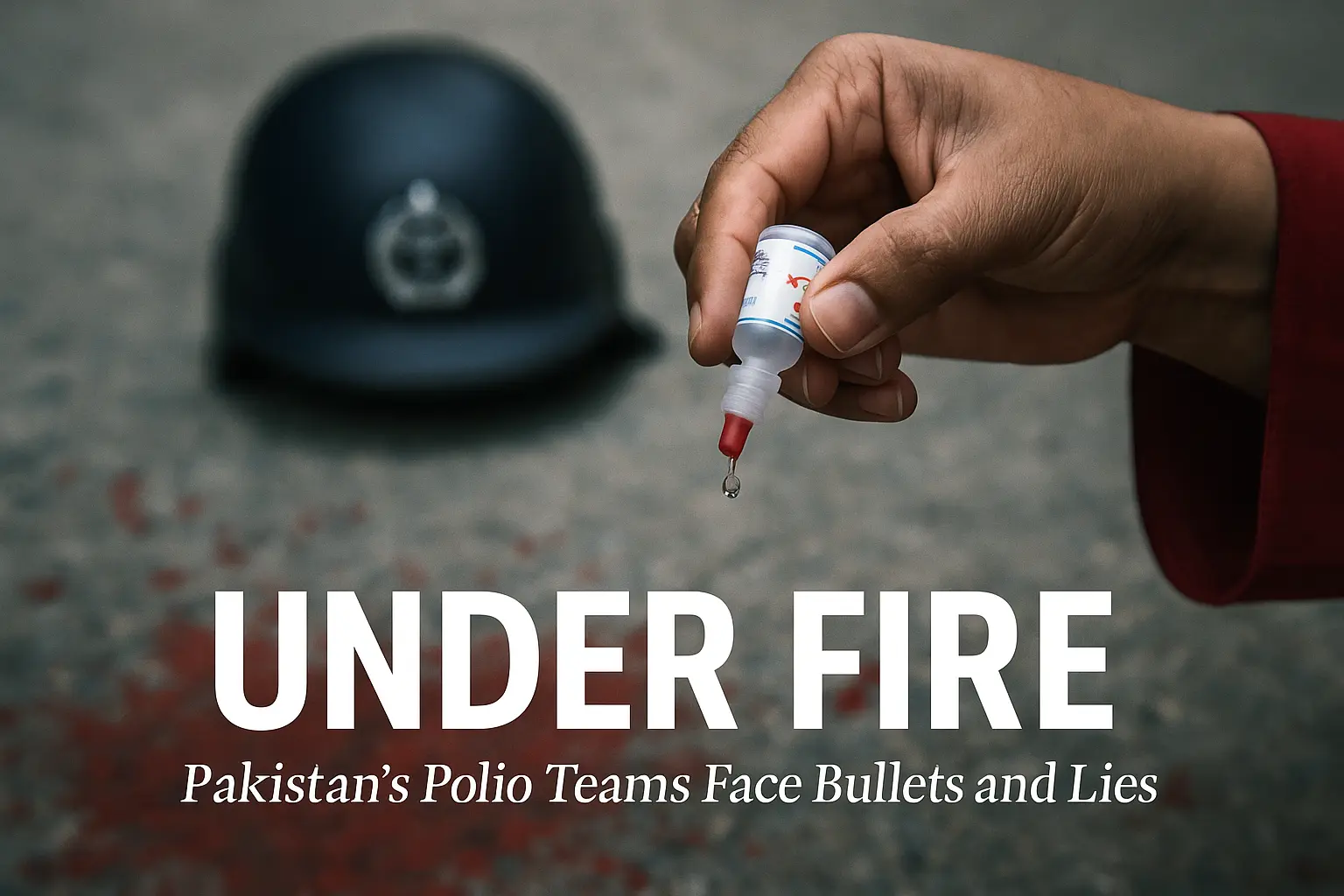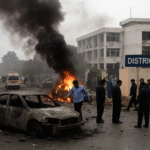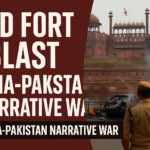1. A Morning Turned Tragic
The morning air in Matta was calm when Ayesha, a young health worker, knocked on a wooden door with her vaccine cooler slung over her shoulder. A few steps away stood Constable Abdul Kabir, assigned to protect her team. Moments later, two men on a motorcycle roared down the narrow lane, opened fire, and sped away. Kabir fell instantly—shot dead while defending those who were saving lives.
This attack on October 14, 2025, in Swat district’s Matta area, wasn’t an isolated act of violence. It was a haunting continuation of a long campaign of terror against Pakistan’s polio workers. The team had been part of a nationwide, week-long vaccination drive aiming to immunize over 45 million children against the crippling virus.
Yet, as in years past, the campaign began under the shadow of fear.
2. A Deadly Pattern of Violence
For over two decades, Pakistan’s health workers have braved unimaginable risks. Since the early 1990s, more than 200 polio team members and security personnel have been killed across Khyber Pakhtunkhwa, Balochistan, and Sindh.
In July 2025, two police officers were ambushed in Mastung, Balochistan, while protecting vaccinators. Earlier attacks in Dera Ismail Khan and North Waziristan revealed the same chilling trend: targeted violence designed to spread fear and obstruct health efforts.
Each time a gunman strikes, Pakistan’s dream of becoming polio-free slips further away. The killings not only rob families of loved ones but also undermine public confidence in vaccination drives.
3. The Roots of Resistance
Why are those who deliver vaccines treated as enemies?
Extremist factions—some linked to local militant outfits and others to splinter Taliban groups—portray vaccination as a Western conspiracy. They claim vaccines sterilize Muslim children or are used for espionage. These falsehoods, amplified through local clerics and social media misinformation networks, have taken deep root in communities with low literacy and high mistrust of the state.
The problem is not limited to rural belts. In certain urban areas, particularly Karachi’s informal settlements, misinformation spreads faster than awareness campaigns. A rumor, once seeded, can undo months of community outreach.
4. The Human Face of Courage
Behind every vaccination drive are thousands of unsung heroes—mostly women—who walk door to door, often earning just a few hundred rupees a day.
They enter volatile districts, endure insults, navigate conservative social barriers, and carry out their duties with unwavering resolve. Many are widows or sole breadwinners, working out of both necessity and compassion.
“I know the risks,” says a vaccinator from Charsadda, quoted anonymously for safety reasons. “But if I stop, children will suffer. That’s what keeps me going.”
Their courage forms the moral backbone of Pakistan’s global health reputation. The world recognizes their bravery—but at home, they remain targets of fear, not pride.
5. The Numbers That Tell a Hard Truth
As of October 2025, Pakistan has reported 29 confirmed cases of wild poliovirus. Most surfaced in southern Sindh and Khyber Pakhtunkhwa, where insecurity and vaccine hesitancy intersect.
Globally, only two countries—Pakistan and Afghanistan—remain polio-endemic. Every attack pushes Pakistan further from global eradication timelines set by WHO and UNICEF.
Despite immense progress—improved cold chain systems, stronger surveillance, and local partnerships—each casualty represents a strategic and moral setback in the fight against one of humanity’s oldest diseases.
6. The Security Paradox
Pakistan’s government assigns thousands of police and Frontier Corps personnel to protect polio teams. Yet, attacks continue. Why?
Part of the reason lies in predictable movement patterns—teams often travel along fixed routes and schedules, making them easy targets. Many areas still lack proper threat mapping and intelligence coordination between district authorities, police, and local elders.
Moreover, the overlapping mandates between provincial health departments, WHO coordination cells, and security agencies create bureaucratic delays. A threat detected at the local level may not reach the teams in time.
In the words of one provincial officer, “We fight two battles: one against polio, and one against red tape.”
7. Misinformation: The Invisible Enemy
Even as gunmen attack in the physical world, digital misinformation kills trust in the virtual one. Conspiracy theories circulate through WhatsApp, TikTok, and local FM radio channels.
False claims that “the vaccine causes infertility” or “contains haram ingredients” discourage parents from allowing their children to be immunized. These rumors persist because public communication campaigns remain reactive, not preventive.
What’s needed is a proactive information counter-offensive—community influencers, local imams, and teachers united to spread truth faster than lies.
The battle for hearts and minds is as crucial as the battle for security.
8. International Angle: Funding and Fatigue
International donors, including the Bill & Melinda Gates Foundation, UNICEF, and WHO, have poured billions into Pakistan’s eradication drive. Yet donor fatigue is real.
In July 2025, reports indicated a reduction in U.S. funding for global polio initiatives. That financial gap may strain Pakistan’s ability to sustain its surveillance and rapid response mechanisms—especially as new variants appear in border regions.
Without consistent global backing, Pakistan risks losing not just progress, but credibility.
9. The Cost of Fear
Each attack reverberates far beyond the immediate tragedy. Vaccinators often refuse to return to high-risk zones. Entire local campaigns stall. Children miss immunization windows. Health teams are forced to operate under tight military escort, which further alienates communities that already mistrust authority.
In effect, militants succeed—not just by killing workers—but by eroding the bridge of trust between the state and the people.
Fear becomes the disease’s greatest ally.
10. The Way Forward
To protect both the people and the mission, Pakistan must rethink its strategy—security alone is not enough.
a) Smart Security
Adopt flexible patrol routes, rotate schedules, and use real-time geo-tracking for teams.
Deploy drones or mobile surveillance for early threat detection in high-risk districts.
b) Community Integration
Recruit local teachers, clerics, and elders into awareness drives. When the message comes from within the community, resistance drops sharply.
c) Narrative Warfare
Launch sustained social-media campaigns countering myths about polio vaccines in local languages. Highlight success stories of children saved, not just statistics.
d) Mental & Financial Support
Provide insurance, risk allowances, and counseling to polio team members and families of martyrs. Recognizing their sacrifice strengthens morale and commitment.
e) Cross-Border Coordination
Work closely with Afghanistan through WHO and UN channels to secure synchronized vaccination windows—ensuring no virus slips through porous borders.
11. Voices of Hope
Despite the odds, there is hope. Pakistan’s vaccination coverage is gradually improving; surveillance systems have expanded to remote valleys and desert regions. Religious leaders in several districts have issued fatwas supporting vaccination as a moral obligation.
The resolve of ordinary Pakistanis—parents, health workers, and local volunteers—shows that the nation’s conscience has not surrendered.
12. Conclusion: Protect the Protectors
The war on polio is no longer a medical campaign—it’s a battle for the soul of Pakistan.
Each slain vaccinator is a reminder that ignorance can be as deadly as bullets. The eradication of polio will mark not just a medical victory, but a moral one—a sign that Pakistan can defeat fear with truth, superstition with science, and violence with unity.
The children of this nation deserve that victory. The fallen heroes of the polio campaign have already earned it.










